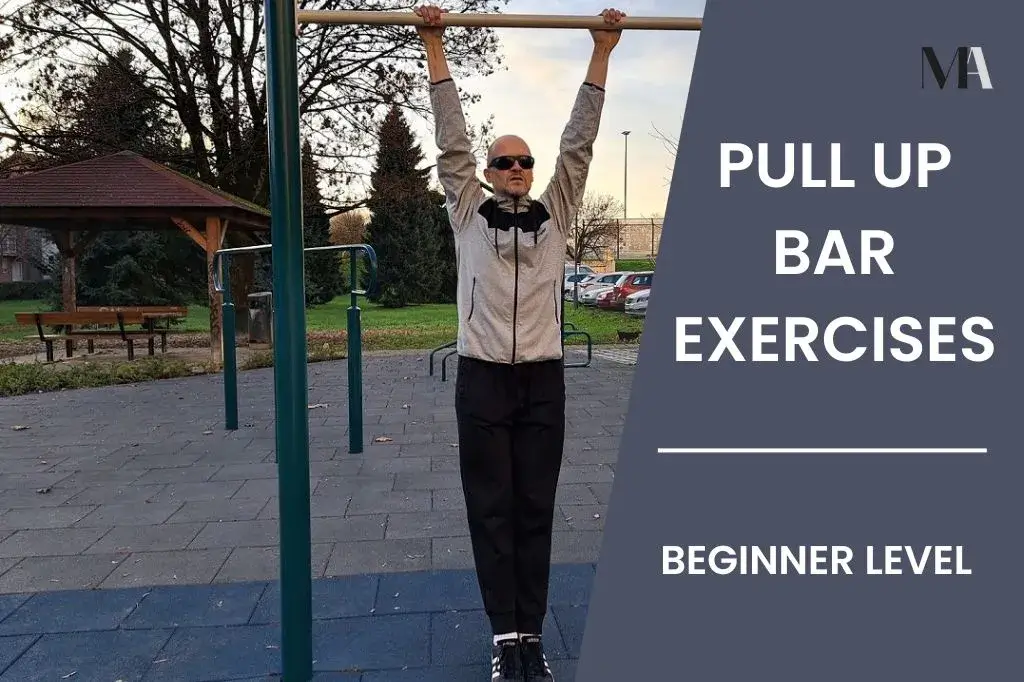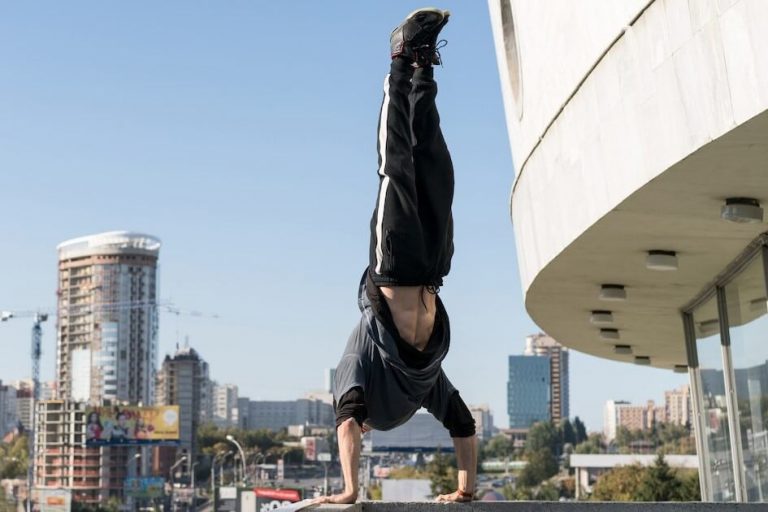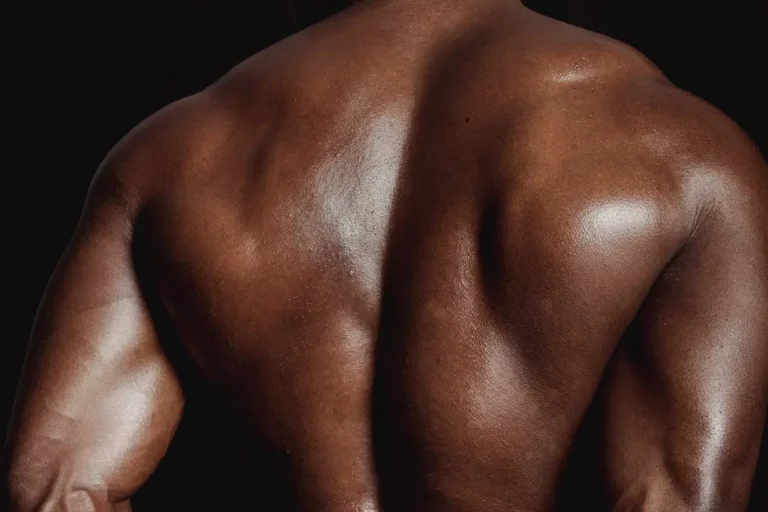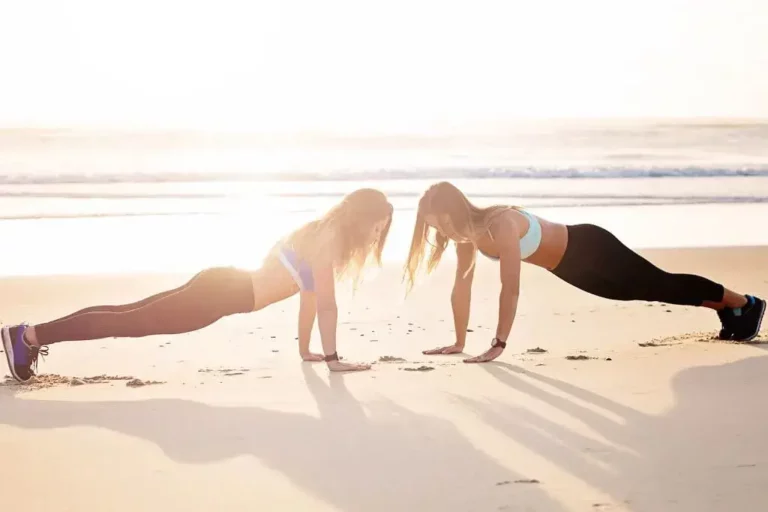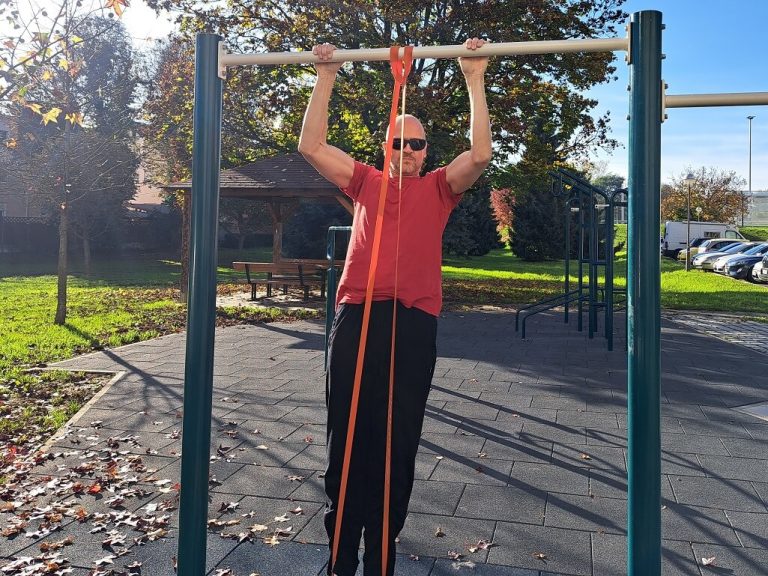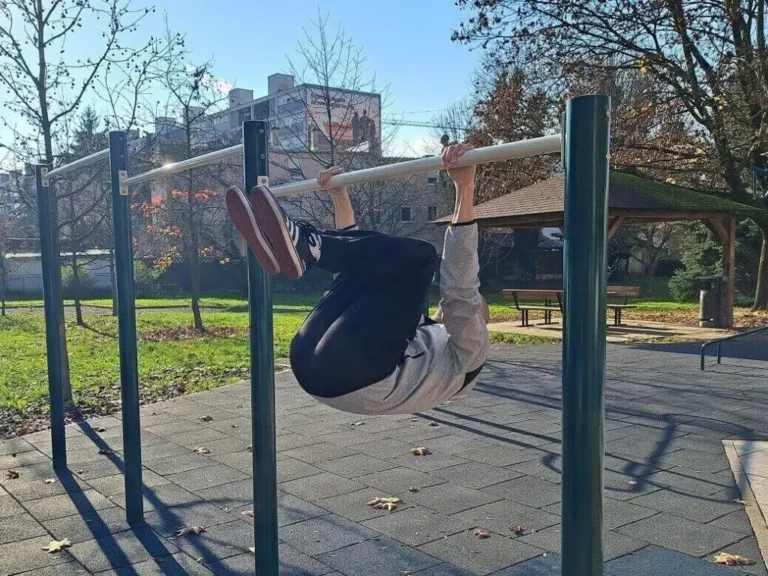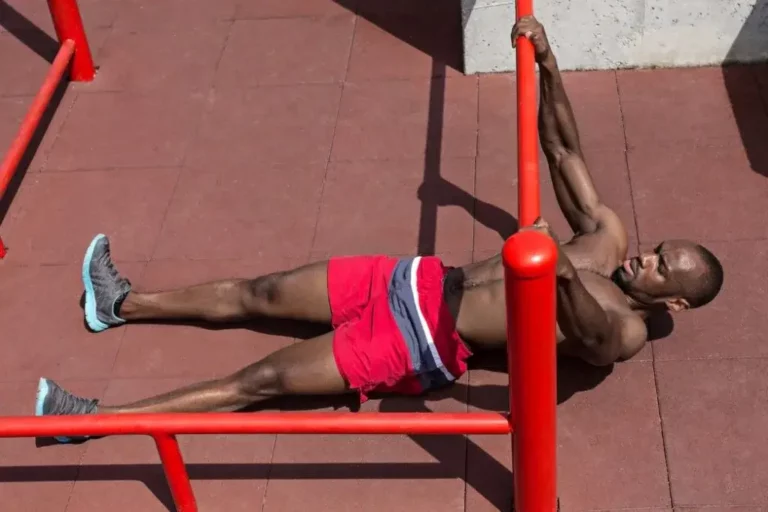Top 5 Beginner Pull Up Bar Exercises (With Sets And Reps)
What are the best beginner pull-up bar exercises when you are just starting out?
You heard about calisthenics and it looks interesting. You found a nearby calisthenics park and now you have access to a pull-up bar.
But where do you start? This is exactly where I was a few years ago.
This article is here to help you start with a few easy calisthenics moves. Those skills will help you build basic strength you can use to continue exploring the wonderful world of calisthenics.
So, here are the top 5 beginner pull-up bar exercises you can explore when you are starting out your fitness journey. They will help you build some serious upper-body strength.
Top 5 Beginner Pull-Up Bar Exercises
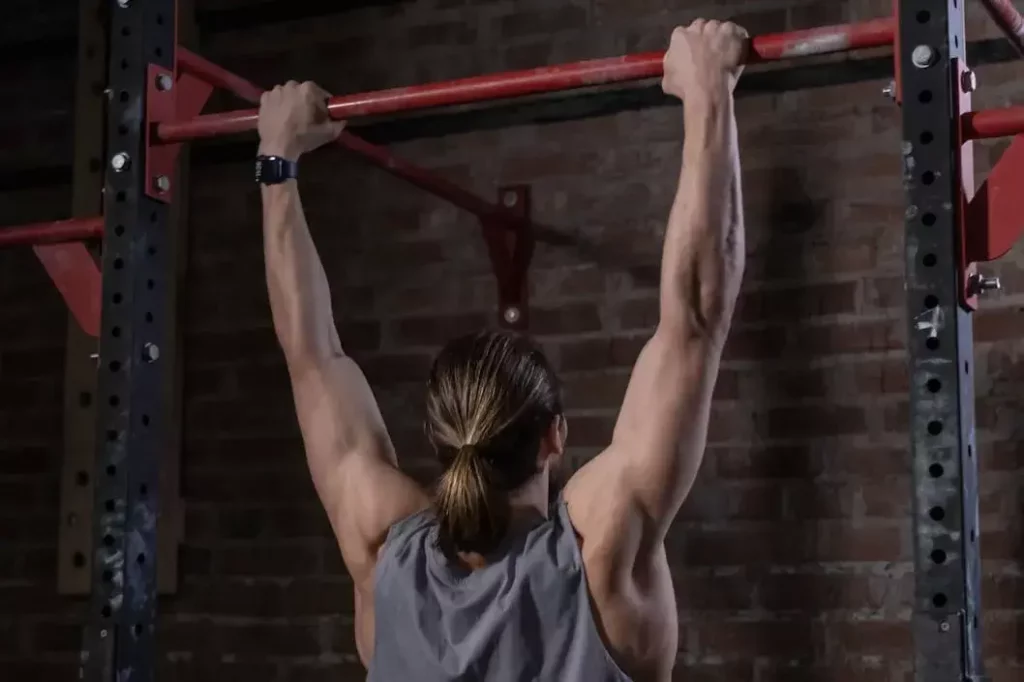
1. Dead Hang
One of the easiest beginner pull-up bar exercises is just hanging from a bar. The so-called dead hang. This exercise is done without movement like the other ones listed here. It’s called an isometric hold exercise where you hold one position without moving.
Dead hang is an excellent skill for improving your grip strength. It’s a prerequisite for all other exercises done on a pull-up bar. This makes it a great choice when you are just starting out.
Muscles Worked
With dead hang you will work the following muscle groups:
- Upper back
- Forearms
- Biceps
- Shoulders
- Core
How To Do A Dead Hang
- Jump up to a pull-up bar
- Grab a bar a bit wider than shoulder width with an overhand grip (your palms facing away from you)
- Engage your core and point your toes down
- Hold for as long as you can (aim to hold for 30 seconds if you can)
2. Band Assisted Chin Ups
Bend-assisted chin-ups are great when you lack the strength for doing regular chin-ups. The resistance band will reduce your weight at the lowest portion of the chin-up move. This will make it easier for you to do chin-ups while you still can’t really do chin-ups.
Muscles Worked
Here are the muscle groups that will work when you do band-assisted chin-ups:
- Biceps
- Upper back
- Forearms
- Shoulders
- Core
How To Do Band Assisted Chin Ups
- Tie a pull-up assist resistance band around the bar
- Grab a bar at shoulder width with an underhand grip (your palms facing toward you)
- Place your feet inside a band loop
- Engage your core
- Pull your body up aiming to touch the bar with your chest (You won’t be able to touch the bar with your chest when you are just starting out. But don’t worry, you will be able to do it when you build enough strength.)
- When your chin is above the bar you reached the highest point of the movement
- Slowly lower yourself down to a starting point
- Repeat for reps
3. Band Assisted Pull Ups
Another great beginner-friendly exercise you can do on a pull-up bar is the band-assisted pull-up. Similar to a band-assisted chin-up, this exercise will help you do your first pull-ups while standard pull-ups are still too hard for you.
Muscles Worked
With band-assisted pull-ups, you will be targeting the following muscle groups:
- Upper back
- Biceps
- Forearms
- Shoulders
- Core
It might seem you are working exactly the same muscle groups as with chin-ups. So, you might be asking yourself what’s the point?
With chin-ups, your biceps muscles will work more. With pull-ups, you will feel your upper back muscles and rear delts taking more load.
How To Do Band Assisted Pull Ups
- Secure the resistance band on the bar
- Grab a bar a bit wider than shoulder width using an overhand grip
- Place your feet inside a band loop
- Activate your abs
- Pull your body up until your chin is above the bar (don’t extend your neck up – keep your head straight)
- Lower down until your arms are straight again
- Repeat
If any of those exercises we were talking about so far seems too hard for you, you can try easier exercises you can find in a pull up progression.
4. Hanging Knee Raises
So far we have been doing exercises primarily focused on your upper back muscles.
Hanging knee raises are great for building the strength of your core. When you improve your core strength you will be able to do other pull-up bar exercises with better form. This will make other exercises easier to do.
Muscles Worked
Now, with hanging knee raises more focus is on the core muscles:
- Hip flexors
- Quads
- Forearms
- Shoulders
- Abs
- Obliques
How To Do Hanging Knee Raises
- Grab a bar wider than shoulder width using an overhand grip
- Lift your knees up toward your chest
- At the end keep lifting your butt up slightly forward and up (This small movement at the end is where you actually engage your abs. Before that, your hip flexors were doing most of the work.)
- Slowly lower your legs back until they are straight again
- Repeat for reps
5. Hanging Knee Side Raises
Hanging knee side raises are great for building the strength of your obliques. With hanging knee raises you were working your hip flexors and abs. Now you are introducing obliques. This will make your core stronger and more resilient.
Muscles Worked
Similar muscle groups will be working with hanging knee raises and hanging knee side raises. But, with hanging knee side raises, more emphasis will be on your obliques:
- Hip flexors
- Quads
- Forearms
- Shoulders
- Abs
- Obliques
How To Do Hanging Knee Side Raises
- Grab a bar wider than shoulder width using an overhand grip
- Lift your knees up and to the left
- Slowly lower your legs back until they are straight again
- Now lift your knees up to your right
- Lifting knees once to your left and to your right counts as one rep
Beginner Pull-Up Bar Workout
Now here’s how you can use those exercises above to do a beginner strength workout:
- Start with band-assisted pull-ups – do 3 sets with 5-8 reps
- Rest for 2-3 minutes
- Do hanging knee raises – 3 sets with 5-8 reps
- Rest for 2-3 minutes
- Do band-assisted chin-ups – 3 sets with 5-8 reps
- Rest for 2-3 minutes
- Do hanging knee side raises – 3 sets with 5-8 reps
- Rest for 2-3 minutes
- Do dead hang – 3 sets with a 30-second hold in each set
One common obstacle when you are just starting out is that you may not be able to endure so much hanging in one workout. If this is the case, use laying exercises for your core instead of hanging ones. Instead of hanging knee raises use laying knee raises. Swap hanging knee side raises with laying knee windshield wipers.
You can also try other easier exercises you can find in a leg raise progression.
Top 5 Beginner Pull-Up Bar Exercises: Conclusion
So there you have it. The selection of the top 5 beginner pull-up bar exercises. You can use those exercises in one workout session as laid out above, or you can add any of those exercises to your existing workout.
Take your time and pace yourself. Your fitness journey is more like a marathon and less like a sprint.
Over time, your strength will improve and you will be able to hang from a bar longer. This will uncover loads of more interesting and impressive skills you will be able to try and use in your workouts.

